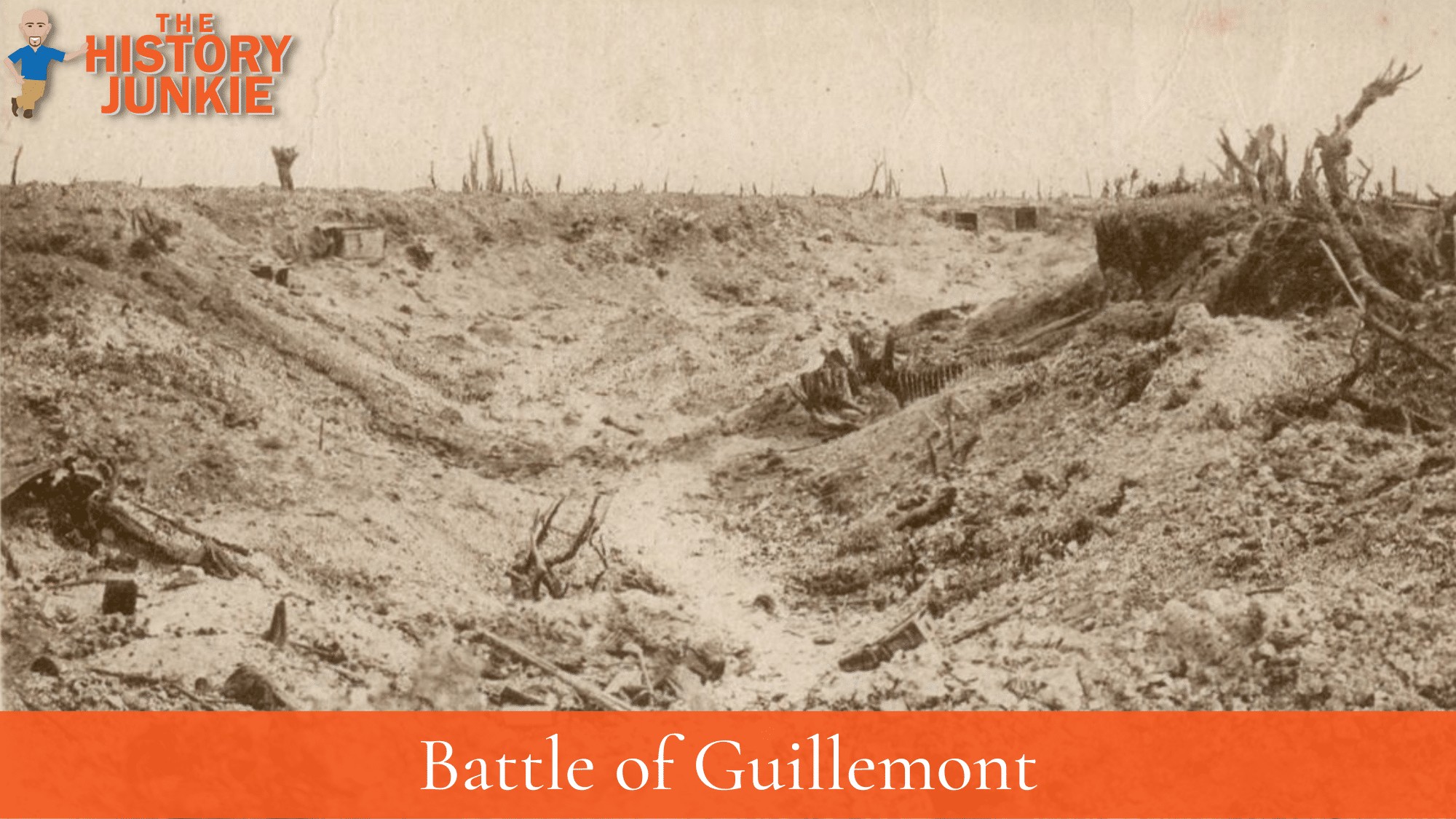The Battle of Guillemont was a subsidiary attack of the Somme Offensive, fought between the British and German armies from September 3 - 6, 1916, during World War 1.

The battle took place on a front of about 5 miles on the Somme battlefield in France.
The British objective was to capture the German-held village of Guillemont, which was a key strategic position. The village overlooked the British lines and provided the Germans with excellent observation and artillery fire positions.
The Fighting
The battle began on September 3, with a massive artillery bombardment of the German lines. The bombardment lasted for several hours and was intended to destroy the German defenses and weaken their morale.
After the bombardment, the British infantry attacked. The attack was successful, and the British were able to capture the village of Guillemont within a few hours. However, the Germans counterattacked several times, and the British were unable to hold onto all of their gains.
The battle continued for over two days, with the British and Germans fighting for control of the village. The fighting was fierce, and both sides suffered heavy casualties.
The battle finally ended on September 6, when the British were able to capture the entire village. However, the victory came at a high cost. The British suffered over 7,000 casualties, and the Germans suffered over 9,000 casualties.
The Battle of Guillemont was a costly victory for the British. However, the capture of the village was a significant strategic gain. The village provided the British with excellent observation and artillery fire positions, and it helped to break the deadlock on the Somme battlefield.
The Battle of Guillemont is also notable for the role played by the South African Brigade. The South Africans were tasked with capturing the village, and they fought bravely and tenaciously.
The South Africans suffered over 2,000 casualties, making the Battle of Guillemont the bloodiest battle in South African history.
